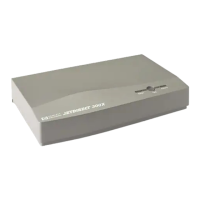For
HP
Internal Use
Only
Note
If
you find
that
your
inputs
to
the
ISL
>
prompt
are being rejected (or
considered invalid), check
the
console configuration (MODES softkey). Ensure
that
AUTOLINEFEED
and
BLOCK
MODE
are
not
enabled (only
REMOTE
should
be
enabled). Also,
the
terminal
should
be
set
to
the
HP
defaults: 9600
Baud, 8
bits/no
parity,
ENQ/
ACK.
3.
Type
DUMP
at
the
ISL
>
prompt
to
initiate
the
dump
program.
4.
The
dump
program
prompts
you
with
Enter
Dump
Name.
The
dump
name is
written
to
tape
as
an
identifier which is useful
if
the
tape
is accidentally
mislabeled
or
is mixed
up
with
another
dump
tape.
The
dump
name
should begin
with
an
alpha
character. For naming conventions,
the
Response Center recommends
that:
a. System
Aborts
be
named
"Axxxx" where
the
xxxx is
the
system
abort
number.
b.
HPMCs
be
named
"HPMC".
c.
System hangs can be labeled
"HANG".
Type
in
your name, reason for
taking
the
dump,
site
name
and
timestamp
of
the
system
interruption.
5.
If
you do
not
respond
to
the
prompt
within a few seconds,
the
dump
continues.
If
this
happens
the
dump
does
not
receive a name,
but
the
contents of
the
dump
are
not
harmed.
6.
Monitor
the
progress
of
the
dump,
recording any
error
messages
that
occur.
Report
these
error
messages
to
the
Response Center when you call.
Step
4:
Restart the System.
At this
point,
the
dump
has completed
and
you should
be
at
the
ISL
>
prompt.
1.
You can now
restart
the
system using a START
RECOVERY
(Warmstart)
or
a START
NORECOVERY
(Coolstart)
at
your option.
2.
At
this
point,
it
is normally safe
to
perform your typical
system/
data
base recovery
procedures
and
resume system processing.
Step
5:
Process the Memory
Dump.
At this
point,
your system is back up
and
running normally. You should also have a memory
dump
tape
of
the
failure which completed
without
error.
The
next step is
to
process
the
dump
tape
so
that
its
contents can
be
remotely analyzed. Do
this by running
the
Dump
Analysis Tool (DAT), a utility residing
in
the
DAT.TELESUP
group/account.
1. Log on as MGR.TELESUP,DAT.
2.
Type
DAT
at
the
colon
prompt
to
initiate
the
Dump
Analysis Tool.
a.
If
you get
the
following
error
message:
"Program
requires
more
capabilities
than
group
is
allowed
(LDERR
505)
11
•
the
DAT group was
not
created
with
full capabilities. Enter:
:ALTGROUP
DAT;CAP=IA,BA,PH,MR,DS,PM
Troubleshooting 5-25
